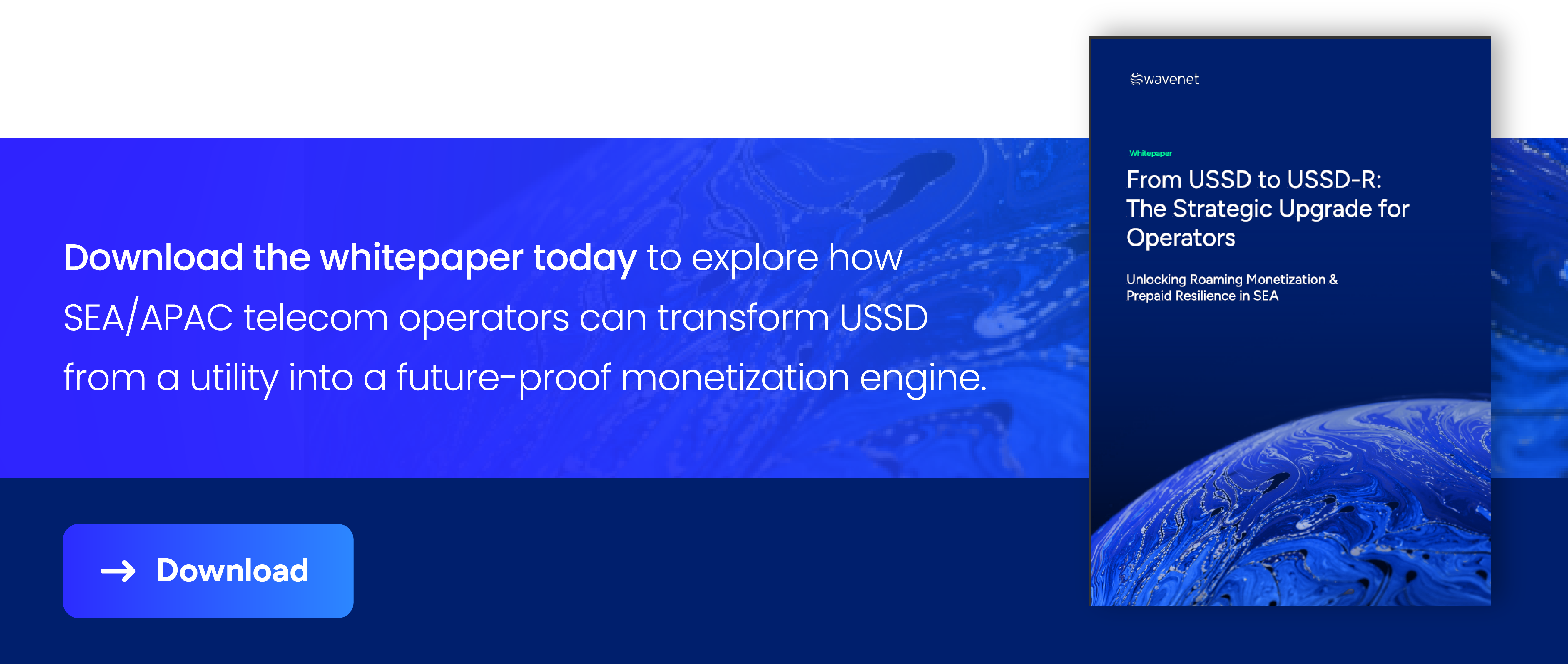Southeast Asia’s (SEA) telecom operators are at a turning point. Prepaid dominates, churn happens in seconds, and OTT players are steadily eroding traditional revenue. In this hyper-competitive environment, every interaction matters.
For years, USSD has been the backbone of prepaid services — powering balance checks, recharges, roaming packs, and mobile money. It works on any handset, is data-free, and has been the most reliable channel for prepaid journeys. But the challenge is clear: the moment subscribers cross a border, standard USSD falls short. No roaming pack activations. No top-ups. No wallet access. The result? lost revenue, frustrated customers, and increased churn as subscribers switch to local SIMs or OTT apps.
Why Upgrade the USSD Gateway Now?
- Roaming growth across SEA/APAC is back, and prepaid subscribers expect seamless access to roaming packs the moment they land.
- Mobile money and financial inclusion still rely heavily on USSD, especially in markets where data access is limited or costly.
- Prepaid stickiness is under pressure, and any failed recharge or unavailable menu abroad can push a customer to a competitor.
In short: keeping USSD alive abroad is no longer optional. It’s a strategic lever for protecting prepaid revenues and unlocking new monetization opportunities.
USSD-R: Continuity That Pays Off
USSD-R (USSD with Roaming) extends the same USSD menus and gateway logic to roaming subscribers. With a lightweight upgrade to existing USSD gateways, telcos can ensure service continuity when subscribers travel abroad.
With USSD-R, operators can:
- Offer seamless roaming pack activation via NI-USSD prompts on arrival.
- Enable recharge and balance top-ups abroad, keeping SIMs active and ARPU alive.
- Support cross-border mobile money transactions, from remittances to bill payments, without the need for apps or data.
- Embed partner monetization into menus, such as travel insurance, OTT bundles, or ride-hailing vouchers.
This is more than a technical configuration; it’s a revenue engine built on a channel prepaid customers already trust.
Business Impact for Telcos
For operators in SEA, the benefits are twofold:
- Direct revenue: roaming packs, top-ups abroad, mobile money fees, and partner activations.
- Indirect revenue: lower churn, stronger loyalty, reduced call center traffic, and new partnership revenue streams.
By upgrading USSD to USSD-R, operators transform what was once a utility channel into a growth platform that directly addresses the realities of SEA’s prepaid-heavy, roaming-intense markets.
Why USSD Still Matters in SEA/APAC
Despite the growth of mobile internet, the region’s digital divide remains. With mobile penetration exceeding 150% in some markets and banking access still near 50%, USSD continues to be the most inclusive, cost-effective way to deliver essential prepaid and financial services. For operators, extending USSD through USSD-R is a small upgrade with outsized impact: more roaming revenue, stronger prepaid resilience, and customer loyalty that lasts across borders.
Discover More – Download the White Paper
Wavenet’s white paper, From USSD to USSD-R: The Strategic Upgrade for Operators in Southeast Asia, breaks down the architecture, regional use cases, and the monetization pathways that make this upgrade essential.









